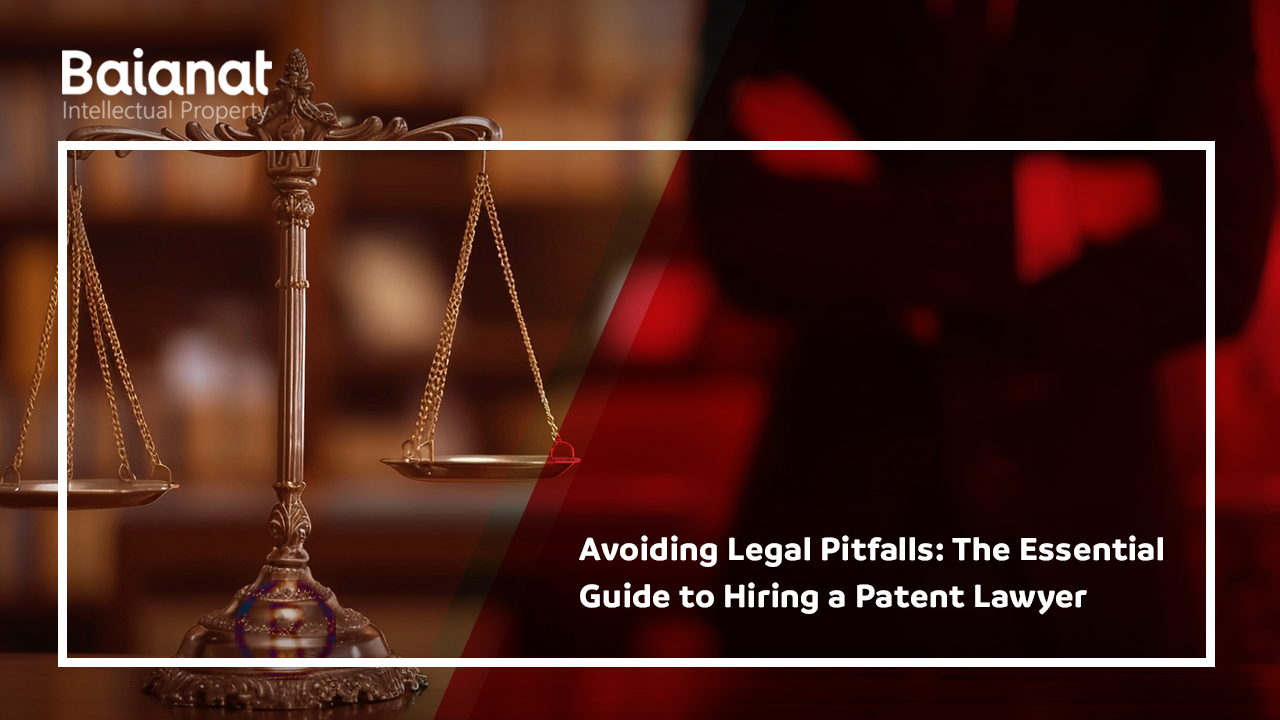Intellectual Property and Copyright Protection in Australia
In the digital era, exchanging ideas only needs a mere click, creating an urgent need to protect those ideas from infringements or misuse. Within this landscape intellectual property (IP) and copyright law in Australia protecting creativity have become more critical than ever before and play a pivotal role.
In today’s article, we will delve into the different types of intellectual property and copyright law in Australia. We will discover how they offer unparalleled protection in a constantly evolving digital era and how they foster innovation and benefit businesses.
Intellectual Property Law in Australia
On the global stage, Australia has long been hailed as a nation of inventors. From the implant to the advancements in renewable energy to genetic engineering, intellectual property, and copyright law in Australia was the backbone of this massive innovative culture, shaping and empowering creative minds nationwide.
The digital frontier presents both opportunities and challenges in this rapid technological advancement. An ever-changing and evolving intellectual property landscape has become necessary in these circumstances.
Without the safeguard offered by intellectual property and copyright law in Australia, the nightmare that anyone could exploit your works without your consent could become true. Fortunately, the Australian legal framework offers robust protection and exclusive intellectual property rights.
Navigating Different Forms Of Intellectual Property Law in Australia
Your mind creation is your intellectual property; once you can transfer it into ideas, products, services, or processes recognized by law, intellectual property will handle how it will be used, and shared, and even how you will own it.
Artistic work, sounds, slogans, images, literary symbols, and colors can all be intellectual property in different forms; all are protected by federal legislation and the common law, which has created a well-developed legal system protecting individuals and businesses.
Australia is also a signatory to the World Trade Organization Agreement on Trade-related Aspects of Intellectual Property Rights (TRIPS), establishing minimum IP protection and enforcement standards. Here are the different forms of intellectual property in Australia:
-
Trademarks
A trademark can be a phrase in plain or stylized text, logo, symbol, letter, aspect of packaging, or any combination of them. A trademark owner can benefit from additional protection the Trademarks Act 1995 (Cth) provides by registering it. If the trademark is not registered, the owner will only have the protection given by the common law.
Intellectual property law in Australia states that protection is given to the first one who used the trademark, not the person who is first to register, which can lead to many legal issues. The trademark enters an objection period through which the person who first used it can object to the registration, and if he doesn’t object within this period, he might lose his rights.
-
Patents
Patnts Protect new inventions such as devices, substances, methods, and processes. According to patent law, To grant a patent, your invention must be novel, helpful, and suitable for the manufacturer and inventive. Patents take at least 6 months to register; IP Australia issues all Australian patents.
According to intellectual property law in Australia, patent protection lasts up to 20 years as standard and 25 years for pharmaceuticals, and renewal fees are paid. A patent can cover various inventions, including organic chemistry, civil engineering, appliances, pharmaceuticals, and medical technology. Under limited circumstances, patents can also be granted for AI/computer-related inventions, business methods, and microorganisms.
Patent Law in Australia provides a defense against third parties from unauthorized use, manufacture, or selling of an invention; It can also be used to license the use or selling of particular inventions on agreed terms.
According to patent law in Australia, certain things can’t be patented, including Plans for purely mental processes, artistic creation, mathematical models, and biological processes for a human generation.
Domain name
A domain name is your unique internet address that allows others to access your website. A domain name connected to Australia must end in “.au” and be regulated by the .au Domain Administration (auDA).
There are some policies on domain name eligibility and allocation your domain must meet to be registered in Australia, such as having an Australian connection by an owing Australian registered trademark or registered Australian company also, the domain has a substantial connection the business activities, or the applicant name; auDA manages these policies on behalf of the Australian Government.
In addition to “.com.au”, “.asn.au”, “.net.au,” and “.org.au”, the auDA is expected to launch registrations for the second-level domain name .au.
Consider that forging entities holding an Australian trademark but not actively trading in Australia would not be entitled to register a domain name that does not match their trademark.
Design protection
Design rights protect the appearance of a specific product in a physical and tangible form, handmade or produced on a commercial scale, like clothes, cars, or furniture. The design rights process is divided into two parts; Registration, which takes 2 months; Certifies, which takes 4 months and lasts up to a maximum of 10 years; and renewal, after 5 years.
According to intellectual property law in Australia, there is a framework for design registration. A design application must be filed with the Designs Office of IP Australia. It can be filled for only one design, multiple designs, or a single design related to many products.
If you designed something, it doesn’t mean you can protect it with a design right. According to intellectual property law in Australia, design rights don’t protect:
- How does the product work, or how it’s designed
- The size or material used in the product
- Designs with no physical forms
- Brand name or logo developed for a specific product
According to intellectual property law in Australia, some designs can’t be registered:
- Bank notes or paper money
- Medals
- Scandalous designs
- Integrated circuit layouts
- Design prohibited under the Olympic Insignia
However, The Designs Office will assess whether the design meets legislative requirements. Take note that Australian design right only gives you protection in Australia. You need to apply for design rights in other countries if you seek protection over them as well.
Before applying for design rights, you need to:
- Make sure it’s the correct IP for your needs.
- Know how a design right can affect other rights.
- Search for similar designs.
- Decide the number of designs you want to protect.
- Keep your design a secret.
Plant Breeder’s Rights (PBR)
Plant breeder’s rights grant exclusive commercial rights to reproduce or propagate new plant varieties such as trees, flowers, shrubs, and vines in addition to fungi and algae; it takes about two and a half years to register, depending on the variety to be registered.
Plant breeder’s protection last for 20-25 years for trees and certain vines, depending on the type of the plant, and it is renewed annually; otherwise, it lapses and can’t be reactivated. Registering your plant breeder’s right gives you exclusive rights to sell, import & export, and sell the right to another party for the plant material.
According to intellectual property law in Australia, your plant must be a product of a selective breeding process, recently exploited, uniform, stable, and distinct to be granted by the plant breeder’s right. This right is limited to Australia; You need to apply for Plant breeders’ protection in other countries if you seek protection over them as well. Others can use your plant varieties for experimental non-commercial use or breeding other plants even if you have PBR.
To manage your intellectual property rights in Australia, you need to renew your registration on time before it lapses, enforce your rights by Preventing infringements by taking legal actions, keep registration details updated, and use it for commercial gain.
after knowing about Intellectual Property and Copyright Protection in Australia .. read more from baianat ip
patent law problems in singapore
Intellectual Property Rights Law for Clothing Design
Ensuring Intellectual Property and Copyright Protection in Australia
You don’t need registration to obtain copyright protection in Australia, as specific formats like images, music, and text are automatically protected. In most other countries, Australian content is protected through reciprocal agreements with organizations that enable the licensing of foreign content in Australia and Australian content in other countries.
There are two main objectives for the copyright system, which are Providing incentives for creators to invest in and create new content by allowing them to set terms for its use, which may include payment and Offering financial rewards to content creators whose work is valued by others who lack the ability or time to create it themselves.
Copyright protection in Australia treats different uses of content differently; some require permission or payment, while others don’t, like reporting news, review, study and research, format or space shifting, and criticism. Uses covered by the statutory license for education and government do not require permission but fair payment.
What is international IP?
International intellectual property will enable you to protect your IP in most countries; It will help you protect your design rights (industrial designs), plant variety (Plant breeder’s rights), inventions, and trademarks, like the Nike swoosh logo, RM Williams boots, Gardasil vaccine, and Apple variety (ANABP 01).
You can apply for international IP through the country’s IP office or authority or via an international system, and you will pay a fee for each overseas IP right you apply for. International IP life span varies according to regulations and requirements from one country to another to secure your protection.
Protecting your IP rights internationally will help you establish your market position, increase your competitive advantages, and minimize the risk of IP infringements.
Hire Baianat IP for Ensuring Intellectual Property and Copyright Protection in Australia
We focus on providing creative solutions and services related to protecting and enforcing intellectual property rights in alignment with the Australian intellectual property framework.
Our team includes experts regarding legal frameworks and regulations governing intellectual property in Australia, including copyrights, patents, trademarks, and designs that help us navigate the intricacies of the Australian IP framework and ensure our client’s intellectual property is adequately protected.
Schedule a free consultation with one of our experts, who will assist you with tailored advice to protect your IP rights in Australia and globally. Learn more about Intellectual Property and Copyright Protection in Australia by reading our recent articles on topics such as:-
Business Info:
- Address: 6663 Ar Rayan – Al Nafel Dist. Unit No 44 Riyadh 13312 – 3556 Kingdom of Saudi Arabia.
- P.O Box: 85424, Riyadh 11691
- Phone nu: +966 11 41 27 755
+201 019 955 220
after knowing about Intellectual Property and Copyright Protection in Australia .. read more from baianat ip









